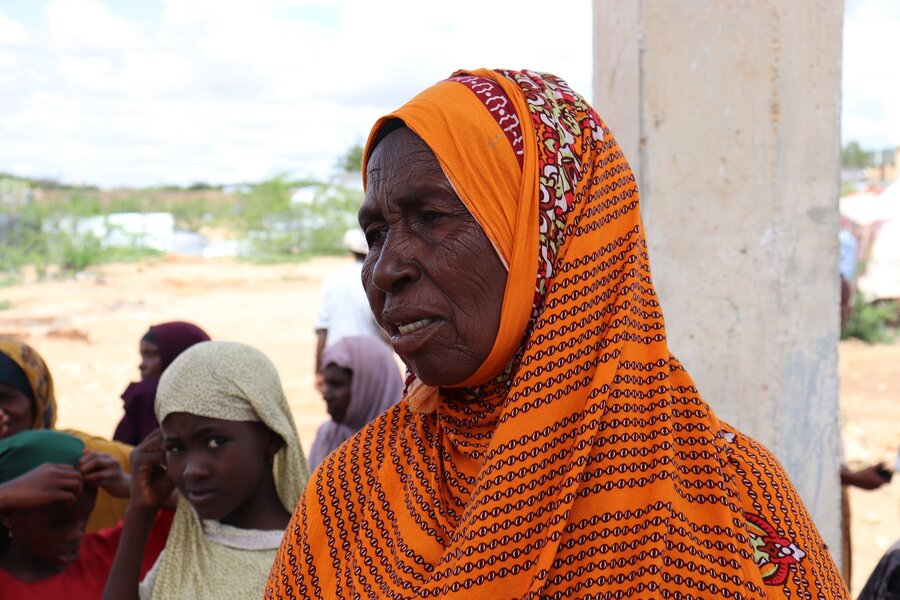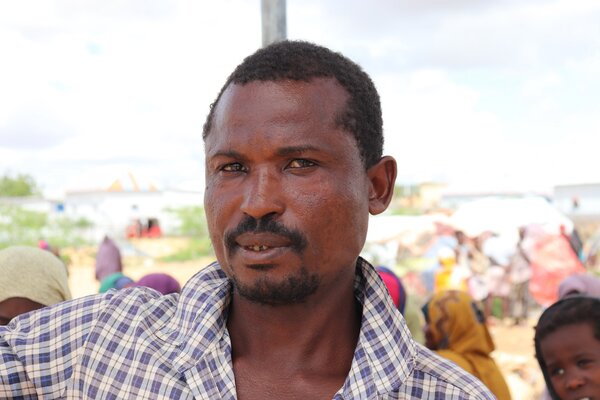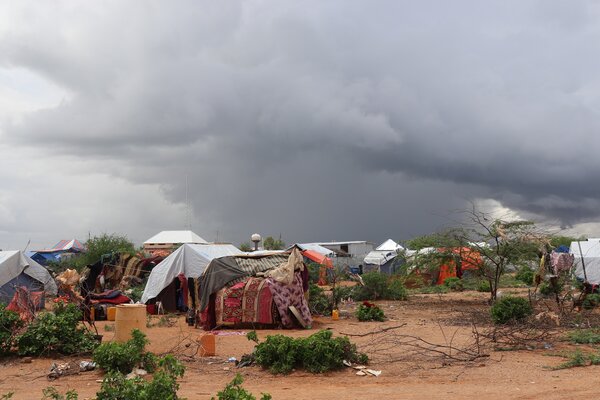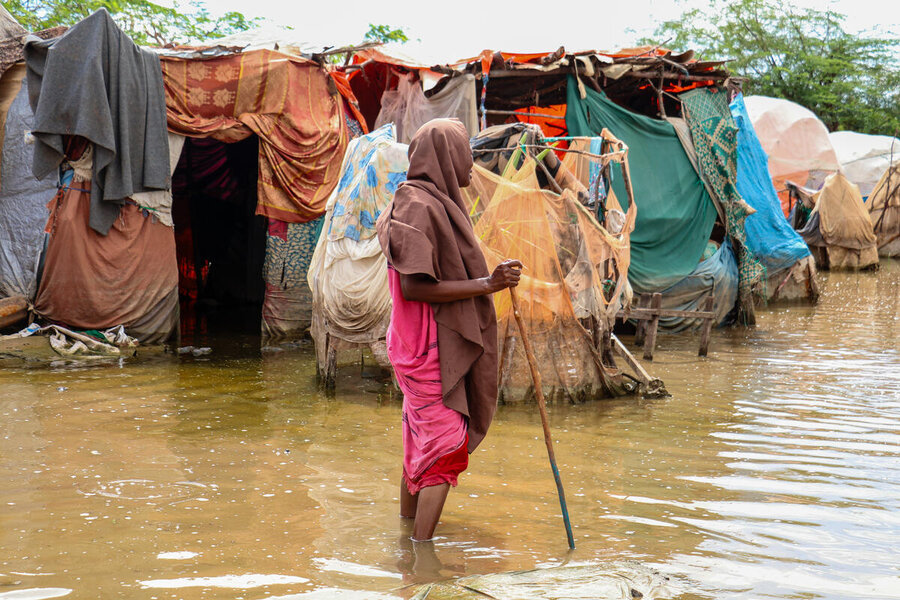Dial A for anticipate: WFP helps families in Somalia as floods hit food and drive hunger

It’s a week since Bashir Abdi, his wife and nine children fled to the Iftin camp for displaced people, outside the town of Beletweyne in central Somalia.
“I was forced to move by the flash floods. In the middle of the night, water started to pour through the village,” he says.
“[But] the warning messages were good,” he adds of assistance he received from the World Food Programme (WFP). “We were told everything: what to do, where to go, and to collect important household items. And the cash vouchers helped.”
Abdi is one of 700,000 people driven from their homes by deadly floods sweeping southern and central Somalia, made worse by El Niño weather patterns. He and his family evacuated to the higher ground of Iftin from nearby Wadi Shabelle, now a ghost town of empty tents mired in stagnant water and stinking mud.


The floods feel like a cruel joke, coming just months after the longest drought in Somalia’s recorded history. The drought pushed the country to the brink of famine, barely averted through a massive humanitarian scale-up. Now torrential rains and rising waters, which have lashed much of East Africa, have robbed vulnerable communities of any chance to recover.
But WFP and Government authorities equipped Abdi and his family, along with many others, with the funds and knowledge to prepare for the floods before they hit. The family counts among tens of thousands of Somalis reached with our first anticipatory action programme against floods in Africa. The programme, to anticipate and mitigate the fallout of weather extremes, was recently launched in coordination with the Somali Disaster Management Agency.

“The most vulnerable people in Somalia have been hit once again by climate change,” says Laura Turner, WFP Somalia Deputy Country Director. “We need to provide communities with the tools and knowledge to weather these extremes to break the crisis-driven cycle of hunger that has afflicted Somalia for too long.”
As soon as rainfall forecasts passed key thresholds, WFP sent pre-emptive cash transfers to over 200,000 people in anticipated flood zones along the Juba and Shabelle rivers. The money enabled them to pay for their evacuation or buy vital supplies once they had moved.
WFP also used local radio, loudspeakers and cell phone voice messages to warn hundreds of thousands more people about the coming deluge and to guide them in their planning.
These initiatives can mean fewer people needing urgent humanitarian assistance when disaster strikes. For many of those in Iftin, it has come just in time.
“I heard the radio messages, and I received US$70 … I bought rice, spaghetti and oil,” says 80-year-old Madina Odawye, who moved to the camp with her three grandchildren just a few days before Abdi. “It helped us. It came at the right time.”
Today, Iftin bustles with activity. Other flood evacuees are taking advantage of a brief lull in the rains to build temporary shelters from whatever they can find: tree branches, old fabric, corrugated iron. But, overhead, the sky is already darkening again. The rains are coming back and the waters are rising day by day.
A few days from now, much of Beletweyne town itself will be flooded. The roads are already full of families fleeing in trucks and donkey carts, piled high with furniture and often with children perched on top. The people in Iftin can only hope their new homes will stay safely above water.
This devastating cycle of drought and flood is tragically recurrent in Somalia. Climate change is making things even worse – the seasonal droughts and floods are growing more extreme, driving some of the worst hunger levels in over a decade. Over 4 million people, a quarter of the population, face acute hunger by the end of 2023.
“This is the fourth time we suffered from floods, and the fourth time we came here,” says Abdi. “But we were not expecting these kinds of flash floods…we were not aware that our valley would flood so quickly [this time].”
“The price of food is increasing, and there is less available,” he adds. “And with these floods, everybody is frustrated. There are fewer opportunities to work.”
